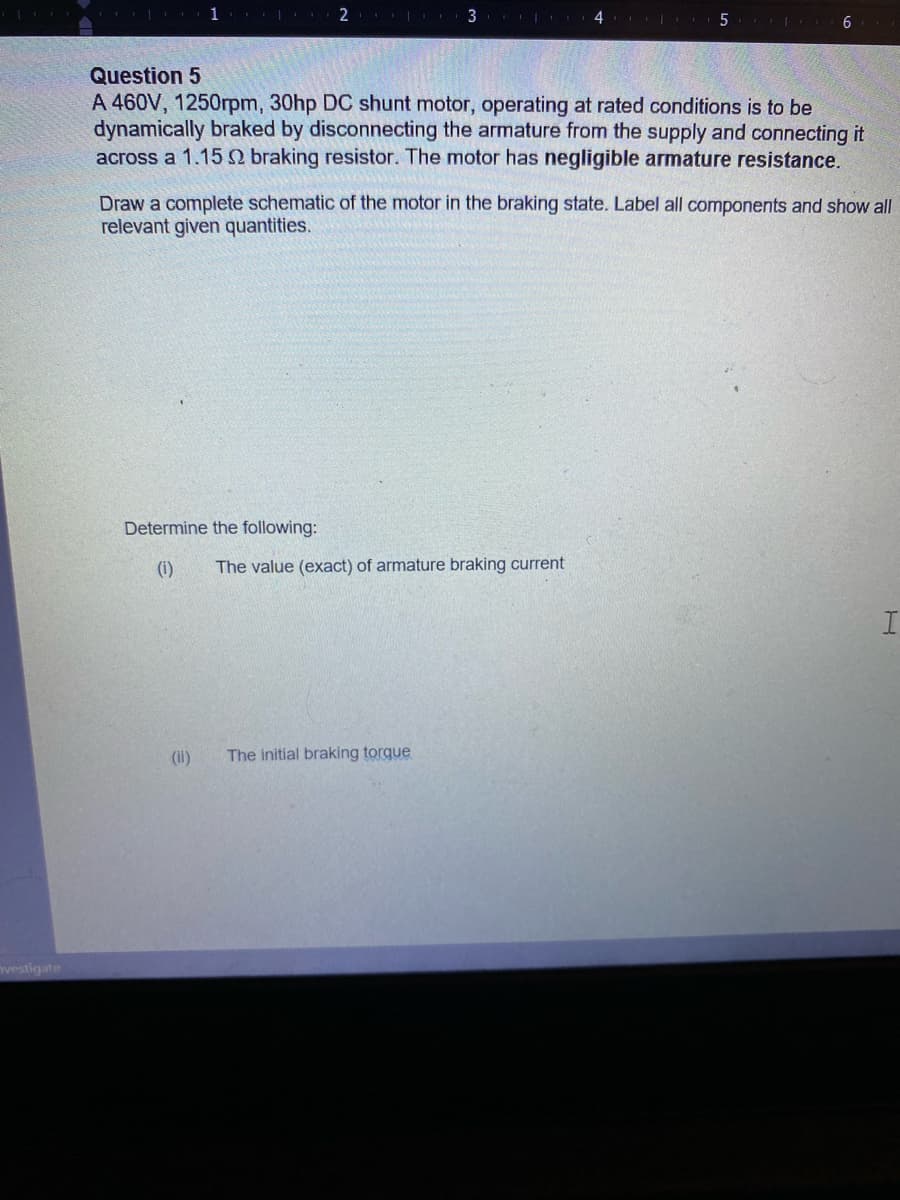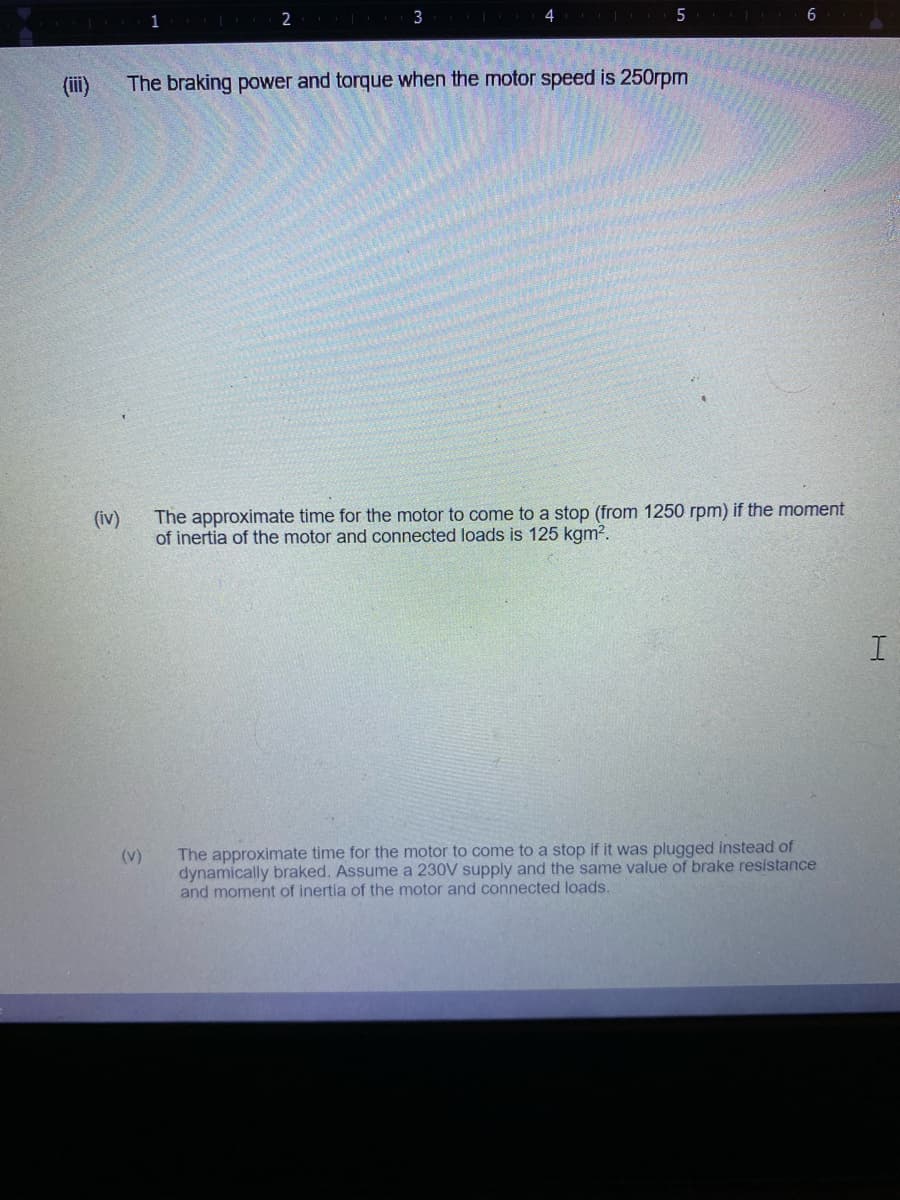A 460V, 1250rpm, 30hp DC shunt motor, operating at rated conditions is to be dynamically braked by disconnecting the armature from the supply and connecting it across a 1.15 2 braking resistor. The motor has negligible armature resistance. Draw a complete schematic of the motor in the braking state. Label all components and show all relevant given quantities.
A 460V, 1250rpm, 30hp DC shunt motor, operating at rated conditions is to be dynamically braked by disconnecting the armature from the supply and connecting it across a 1.15 2 braking resistor. The motor has negligible armature resistance. Draw a complete schematic of the motor in the braking state. Label all components and show all relevant given quantities.
Introductory Circuit Analysis (13th Edition)
13th Edition
ISBN:9780133923605
Author:Robert L. Boylestad
Publisher:Robert L. Boylestad
Chapter1: Introduction
Section: Chapter Questions
Problem 1P: Visit your local library (at school or home) and describe the extent to which it provides literature...
Related questions
Question

Transcribed Image Text:1
2
3
4
6.
Question 5
A 460V, 1250rpm, 30hp DC shunt motor, operating at rated conditions is to be
dynamically braked by disconnecting the armature from the supply and connecting it
across a 1.15 2 braking resistor. The motor has negligible armature resistance.
Draw a complete schematic of the motor in the braking state. Label all components and show all
relevant given quantities.
Determine the following:
(i)
The value (exact) of armature braking current
(ii)
The initial braking torque
vestigate

Transcribed Image Text:2
3
4
6
(ii)
The braking power and torque when the motor speed is 250rpm
The approximate time for the motor to come to a stop (from 1250 rpm) if the moment
of inertia of the motor and connected loads is 125 kgm2.
(iv)
The approximate time for the motor to come to a stop if it was plugged instead of
dynamically braked. Assume a 230V supply and the same value of brake resistance
and moment of inertia of the motor and connected loads.
(v)
Expert Solution
This question has been solved!
Explore an expertly crafted, step-by-step solution for a thorough understanding of key concepts.
Step by step
Solved in 4 steps with 2 images

Knowledge Booster
Learn more about
Need a deep-dive on the concept behind this application? Look no further. Learn more about this topic, electrical-engineering and related others by exploring similar questions and additional content below.Recommended textbooks for you

Introductory Circuit Analysis (13th Edition)
Electrical Engineering
ISBN:
9780133923605
Author:
Robert L. Boylestad
Publisher:
PEARSON

Delmar's Standard Textbook Of Electricity
Electrical Engineering
ISBN:
9781337900348
Author:
Stephen L. Herman
Publisher:
Cengage Learning

Programmable Logic Controllers
Electrical Engineering
ISBN:
9780073373843
Author:
Frank D. Petruzella
Publisher:
McGraw-Hill Education

Introductory Circuit Analysis (13th Edition)
Electrical Engineering
ISBN:
9780133923605
Author:
Robert L. Boylestad
Publisher:
PEARSON

Delmar's Standard Textbook Of Electricity
Electrical Engineering
ISBN:
9781337900348
Author:
Stephen L. Herman
Publisher:
Cengage Learning

Programmable Logic Controllers
Electrical Engineering
ISBN:
9780073373843
Author:
Frank D. Petruzella
Publisher:
McGraw-Hill Education

Fundamentals of Electric Circuits
Electrical Engineering
ISBN:
9780078028229
Author:
Charles K Alexander, Matthew Sadiku
Publisher:
McGraw-Hill Education

Electric Circuits. (11th Edition)
Electrical Engineering
ISBN:
9780134746968
Author:
James W. Nilsson, Susan Riedel
Publisher:
PEARSON

Engineering Electromagnetics
Electrical Engineering
ISBN:
9780078028151
Author:
Hayt, William H. (william Hart), Jr, BUCK, John A.
Publisher:
Mcgraw-hill Education,